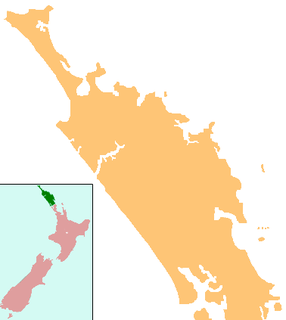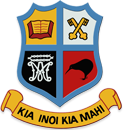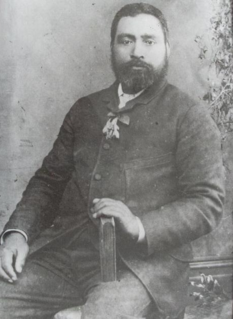
Waitangi is a locality in the Bay of Islands on the North Island of New Zealand. It is close to the town of Paihia, 60 kilometres north of Whangarei. "Waitangi" is a Māori-language name meaning "weeping waters".

Ngāpuhi is a Māori iwi located in the Northland region of New Zealand, and centred in the Hokianga, the Bay of Islands, and Whangarei.

Tahupōtiki Wiremu Rātana was the founder of the Rātana religion in the early 20th century in New Zealand. He rose to prominence as a faith healer.

Ngāti Awa is a Māori iwi (tribe) centred in the eastern Bay of Plenty Region of New Zealand. It is made of 22 hapu (subtribes), with 15,258 people claiming affiliation to the iwi in 2006. The Ngāti Awa people are primarily located in towns on the Rangitaiki Plain, including Whakatane, Kawerau, Edgecumbe, Te Teko and Matata. Two urban hapu also exist in Auckland and Wellington.
Te Wharerahi (c.1770-18??) was a highly respected rangatira (chief) of the Ipipiri area of Aotearoa/New Zealand.
Tapua (c.1730-c.1800) was a Māori rangatira, arikinui of the Ngati Hao hapū, of what became the Ngapuhi confederation.

Tuiti Makitanara, sometimes known as Sweet MacDonald, was a Māori and United Party Member of Parliament in New Zealand.

Hato Petera College was an integrated, co-educational college in Northcote Central, Auckland, New Zealand for students from Year 9 to Year 13. It existed for 90 years, opening on 3 June 1928 and closing on 31 August 2018. The school had a strong Catholic and Māori character. It was located on part of the land originally given by Sir George Grey, Governor of New Zealand, to Bishop Pompallier, the first Bishop of Auckland, in 1849 for education purposes.
Sir Makere Rangiatea "Ralph" Love was a New Zealand Māori public servant and leader of Te Āti Awa. One of his brothers was Eruera Te Whiti o Rongomai Love, a New Zealand rugby player, interpreter and military leader.
Hamiora Tumutara Te Tihi-o-te-whenua Pio (1814–1901) was a New Zealand Māori tohunga and historian. Of Māori descent, he identified with the Ngati Awa and Ngati Tuwharetoa iwi. He was born in New Zealand in 1814.
Mohi Tūrei was a notable New Zealand tribal leader, minister of religion, orator and composer of haka. Of Māori descent, he identified with the Ngāti Porou iwi. He was the only child of Te Omanga Tūrei of Ngāti Hokupu hapū and Makere Tangikuku of Te Aitanga‐a‐Mate hapū.
Hori Tupaea (1879–1944) was a notable New Zealand tribal leader and farmer. Of Māori descent, he identified with the Ngāti Te Whatuiāpiti and Ngati Kahungunu iwi. He was born in Te Hauke, Hawke's Bay, in about 1879. He was a great grandson, through his mother, of Ngati Te Whatuiapiti chief Te Hapuku. His father, Hamiora Tupaea, was a younger son of the leading Tauranga chief Hori Kingi Tupaea of Ngai Te Rangi.
Hori Kingi Tupaea was a Māori leader of the Te Whānau-a-Tauwhao hapu of Ngāi Te Rangi iwi of the western Bay of Plenty in New Zealand. Tupaea was born probably at Tauranga. He succeeded his father as the main leader of Ngāi Te Rangi in the 1830s.
Eruera Riini Manuera was a New Zealand tribal leader, labourer and farmer. Of Māori descent, he identified with the Ngati Awa iwi. He was born in Te Waea, Bay of Plenty, New Zealand, on 6 January 1895.

Hāmiora Mangakāhia was a prominent Māori chief and the first Premier of Te Kotahitanga, the movement for an independent Māori parliament in New Zealand in the 1890s. Of Ngati Whanaunga descent, Mangakāhia was born in Waikaurau on the Coromandel Peninsula. In 1892 he was one of 19 chiefs elected to represent Te Tai Hauāuru in the Lower House of Te Kotahitanga at its first sitting at Waipatu Marae. As a leading organiser of the movement, he was nominated by fellow chiefs Henare Tomoana and Te Keepa Te Rangihiwinui to the position of Premier, which he held for the duration of the 1892 sitting of the parliament.

Hoani Turi Te Whatahoro Jury was a New Zealand Ngāti Kahungunu scholar, recorder and interpreter. Of Māori descent, he identified with the Ngāti Kahungunu iwi. He was born in Wairarapa, New Zealand on 4 February 1841. His mother was Te Aitu-o-te-rangi Jury and his father John Milsome Jury, an Englishman.
Hāmi Te Māunu was a rangatira of Ngāti Mutunga who was born in 1823 in north Taranaki. He was also known as Hamuera Koteriki and Hamiora Te Herepounamu.
Manos Ross Nathan was a New Zealand ceramicist. Born in Rawene, Hokianga, to Eruera and Katina Nathan, he was of Māori descent on his father's side and Greek (Cretan) descent on his mother's side.

The Kotahitanga movement was an autonomous Māori Parliament convened annually in New Zealand from 1892 until 1902. Though not recognised by the New Zealand Government, the Māori Parliament was an influential body while it lasted. By 1902 its role was largely superseded by the Māori Councils established by James Carroll and Hone Heke Ngapua through the Māori Councils Act 1900. As a result, Kotahitanga members unanimously voted for its dissolution at the 10th Parliament at Waiōmatatini in 1902.
Manukapua "Manu" Maniapoto was a New Zealand rugby union player. A lock, Maniapoto represented Bay of Plenty at a provincial level, playing 107 times for the province between 1960 and 1968, scoring 10 tries and kicking one conversion. He was the first player to reach 100 games for Bay of Plenty. Of Ngāti Tūwharetoa, Ngāti Pikiao and Tuhourangi descent, Maniapoto was a member of the New Zealand Māori side from 1960 to 1966, and played for both Tai Rāwhiti (1963–1965) and Northern (1967) in the Prince of Wales Cup.









